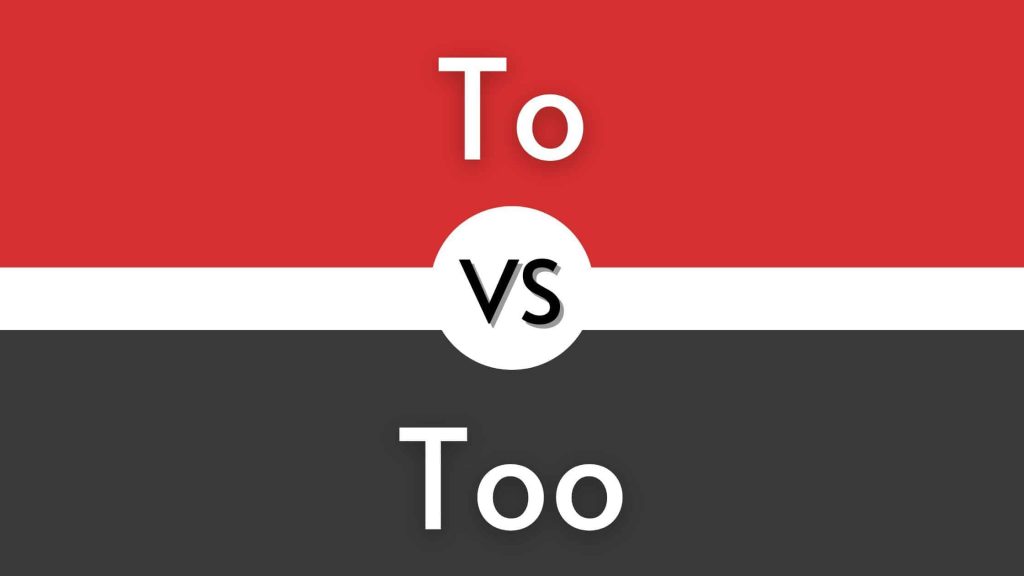If you’ve ever been confused about whether to use “to” or “too,” you’re not alone! These two little words cause trouble for many English learners and even native speakers. But don’t worry—by the end of this article, you’ll know exactly when to use “to” and when to use “too.” We’ll break down the difference between “to” and “too” with simple rules, lots of examples, and practical tips. If you want to master this part of English grammar, keep reading for the ultimate guide to “too vs to.”
Understanding the Difference Between “To” and “Too”
The key difference between “to” and “too” is their meaning and function in a sentence. “To” is usually a preposition or part of an infinitive verb, while “too” means “also” or “excessively.” Knowing which one to use depends on the role the word plays in your sentence. Let’s dive into the details.
The Meaning and Uses of “To”
1. “To” as a Preposition
Most often, “to” is used as a preposition. Prepositions show the relationship between words, often indicating direction, place, or time.
Examples:
- I am going to the store.
- She handed the book to her friend.
- We moved to a new city.
In each example, “to” tells us direction or destination.
2. “To” as an Infinitive Marker
“To” is also used before the base form of a verb to create an infinitive. This is called the infinitive form.
Examples:
- I like to read.
- He wants to learn English.
- They need to finish their homework.
Here, “to” comes before the verb (read, learn, finish) to show what action is happening.
Quick Tip: If you see “to” followed by a verb, it’s probably working as an infinitive marker!
Other Uses of “To”
- Expressing a range: “From Monday to Friday.”
- Telling time: “It’s quarter to ten.”
The Meaning and Uses of “Too”
Unlike “to,” the word “too” has a completely different job. It usually means “also,” “as well,” or “excessively.”
1. “Too” Meaning “Also” or “As Well”
Use “too” when you want to say that something applies in addition to something else.
Examples:
- I want some ice cream, too.
- She is coming, too.
- Can I play too?
You can usually place “too” at the end of a sentence to mean “also.”
2. “Too” Meaning “Excessively”
Use “too” to show that something is more than needed or more than good.
Examples:
- It’s too hot today.
- The bag is too heavy.
- He ran too fast.
Here, “too” means “more than enough” or “more than is good.”
3. “Too” as an Intensifier
“Too” can emphasize extremes. For example:
- That movie was too funny!
- I’m too tired to go out.
Side-by-Side Comparisons: “Too vs To”
Let’s compare “to” and “too” in similar sentences:Sentence with “to”Sentence with “too”I am going to the park.I am going too (meaning, “also”).She wants to dance.She wants too much.Give it to him.Give it to him, too.
Notice how “to” is used with destinations or verbs, while “too” means “also” or “excessively.”
How to Know Which One to Use: Context Clues
Choosing between “to” and “too” is all about context. Here’s how to decide:
- If you’re showing direction, purpose, or before a verb, use to.
- If you mean “also,” “as well,” or “very/excessively,” use too.
Ask yourself:
- Am I talking about going somewhere or doing something? Use to.
- Am I adding information (also) or talking about “more than enough”? Use too.
Example:
- I want to eat pizza too. (I want to do the action. Also, I want what someone else wants.)
Common Mistakes with “To” and “Too”
Even experienced writers mix these words up! Here are some frequent mistakes:
- Mistake: “I am to tired.”
- Correct: “I am too tired.”
- Mistake: “Can I come to?”
- Correct: “Can I come too?”
- Mistake: “I want too go.”
- Correct: “I want to go.”
Practical Tips to Remember the Difference
- “To” is short and simple. Use it for direction, destination, or before verbs.
- “Too” has an extra “o”—think of it as “in addition” or “more than enough.”
- If you can replace it with “also” or “very,” use “too.”
- If you’re using it before a verb or showing direction, use “to.”
Memory Trick:
- “Too” = “also” (Both have double “o”)
- “To” = Direction or infinitive (shorter, goes to a place or action)
Real-Life Examples for Each Use
Examples of “To”
- We went to Paris.
- She wants to study medicine.
- Give the keys to your father.
- I need to rest.
Examples of “Too”
- I’m too busy today.
- Can I join too?
- This soup is too salty.
- You’re coming too?
Practice Sentences: Test Your Understanding!
Fill in the blank with the correct word: “to” or “too.”
- She wants ___ learn how ___ swim.
- It’s ___ cold in here!
- Are you coming ___?
- I gave my book ___ my friend.
- It’s not ___ late?
Answers:
- to, to
- too
- too
- to
- too
Quick Recap: English Grammar Tips for “Too vs To”
- “To” is for direction, destinations, and verbs (infinitives).
- “Too” means “also” or “excessively.”
- Use sentence context to decide which one fits.
- Remember: “Too” has an extra “o” because it means “more” or “also.”
Conclusion: Mastering “Too vs To”
Understanding the difference between “to” and “too” is a big step towards mastering English grammar. Remember, “to” is mostly about direction and action, while “too” means “also” or “more than enough.” With the examples, tips, and practice sentences above, you can feel confident in choosing the right word every time. Keep practicing, and soon you’ll never mix up “to” and “too” again!

Leave a Reply